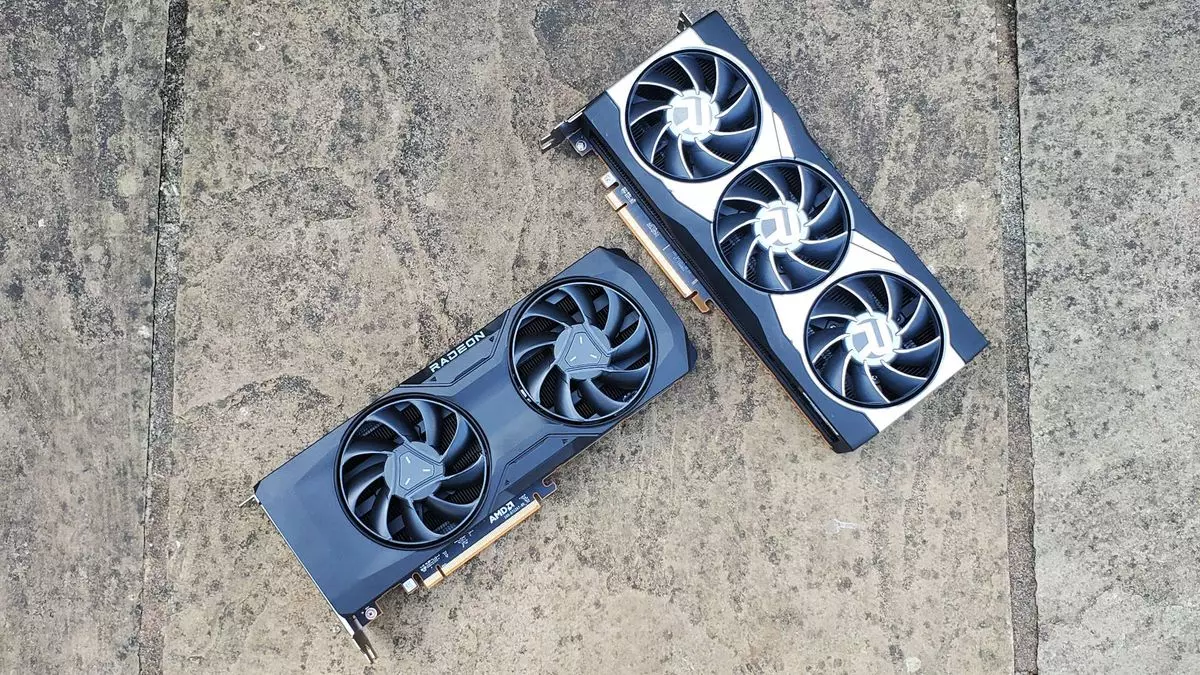AMD, a name synonymous with innovation in the semiconductor industry, has made significant strides in various sectors, particularly with CPUs aimed at consumers and data centers. However, the company continues to grapple with a perplexing dilemma in the gaming GPU sector. In light of the latest financial results and strategic insights from AMD’s CEO Lisa Su, it’s clear that while the company boasts impressive overall revenue figures, the gaming division is experiencing troubling declines. In this article, we delve into the challenges AMD faces in this competitive landscape and explore what the future may hold as the company navigates these turbulent waters.
During AMD’s recent earnings call, the company revealed that it achieved a remarkable record of $6.8 billion in revenue during the third quarter of this year. This triumph is largely attributed to robust performance in data center CPUs and GPUs, as well as client CPUs for PCs and laptops. Despite this impressive financial achievement, a significant portion of the revenue narrative is overshadowed by a 69% year-on-year decline in gaming-related sales, plunging to just $462 million, which accounts for less than 10% of AMD’s overall revenues.
The decline in gaming revenues might seem catastrophic at first glance, yet it’s essential to contextualize this downturn within the cyclical nature of the gaming industry. Sales of gaming consoles, particularly the aging models from Sony and Microsoft, have created a downturn in demand for complementary gaming components like GPUs. The anticipation surrounding upcoming hardware releases, such as the PS5 Pro, offers a sliver of optimism, but the damage from the current slump cannot be ignored.
Despite the promising financial narrative in other sectors, AMD’s handling of PC graphics cards raises questions about their long-term strategies. Lisa Su pointed to an overall decline in gaming revenue as the company gears up for the launch of its next-generation RDNA 4 architecture in early 2025. AMD’s RDNA 4 promises to deliver significant enhancements in gaming performance, especially in ray tracing and AI capabilities. However, the specifics surrounding the current struggles with PC GPUs indicate a disconnect with market needs.
Historically, AMD’s forays into GPUs witnessed a degree of success, particularly with the RDNA 2 architecture, which adopted a monolithic design that was competitive across multiple market segments. However, RDNA 3 marked a pivotal pivot to a chiplet architecture. While chiplets improved efficiency and flexibility in CPUs, they complicated GPU designs significantly. As RDNA 3 struggled to compete effectively with Nvidia’s offerings, AMD appeared to pivot backward, reintegrating a simpler monolithic design for RDNA 4.
This back-and-forth raises questions about the effectiveness of AMD’s development process and decision-making. Was there a fundamental miscalculation in the benefits of chiplet architecture for GPUs? The impression that AMD is reverting to a more traditional design may indicate a lack of confidence in its previous approach, complicating its future competitiveness in a market dominated by Nvidia.
Another layer to this complex narrative is AMD’s recent pivot toward AI and machine learning GPUs. The company reported a meteoric rise in AI GPU revenues, which now parallel its CPU revenues from cloud, server, and client markets. This newfound focus on AI hardware could detract from the energy and resources allocated to gaming GPUs, further complicating AMD’s already delicate position in the PC graphics market.
While AI technology offers tantalizing opportunities for AMD, the company’s attempts to balance these emerging markets with traditional gaming GPU demands could lead to a misalignment in priorities. The anomaly of declining PC graphics amidst an overall successful corporate strategy highlights a critical challenge for AMD. Can the company afford to shift its focus too much and risk alienating a vibrant, albeit fluctuating, segment within its portfolio?
As AMD steps towards launching RDNA 4 and potentially revisiting chiplet architecture with RDNA 5, the future remains uncertain. The company enjoys a solid financial footing, enabling investment in R&D, but there’s no denying that the current landscape is riddled with challenges. AMD must solve the riddle of its underperformance in the GPU market while also leveraging its strengths in AI to emerge as a leader across multiple fronts.
Ultimately, AMD’s journey is a testament to the complexities of innovation in the tech industry. While the specter of declining gaming GPU sales looms large, the potential for revitalization exists. The key lies in effectively balancing ambitions between emerging technologies and traditional markets. As the gaming community eagerly awaits new advancements, AMD has an opportunity to turn its current challenges into a compelling narrative of comeback and growth. Will AMD rise to the occasion? Only time will tell.

